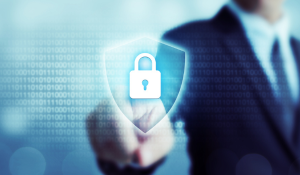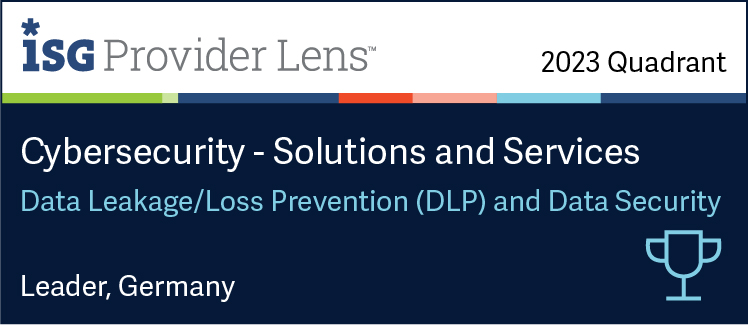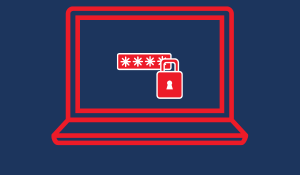The Core Principles of Endpoint Security and Why They Matter
In today's rapidly evolving digital landscape, endpoint security stands as the frontline defense against a myriad of cyber threats. As organizations...

Today more than ever, more and more companies and public offices require powerful security measures to effectively counter the numerous cyber security threats. In view of these challenges, one key tool is becoming increasingly important: Security Information and Event Management, or SIEM for short.
| TABLE OF CONTENT |
In this article, we would like to give you an in-depth insight into the world of SIEM. We will explain how it works and its central importance for the current cyber security landscape. Join us on this exploratory tour!
SIEM stands for Security Information and Event Management Information and it's about collecting, aggregating, correlating and analysing security information and event data from various sources in real time.
The main goal of SIEM is to detect and respond to security incidents, minimise threats and meet compliance requirements at the same time. SIEM systems play a crucial role in proactively monitoring and managing the security infrastructure of organisations.
Imagine having a security guard who never sleeps, constantly monitoring your entire IT infrastructure for suspicious activity—that’s what SIEM (Security Information and Event Management) technology does. It collects logs and security data from across an organization’s network, analyzes it for unusual patterns, and alerts teams when something seems off. By centralizing security monitoring, SIEM helps businesses quickly detect cyber threats, investigate incidents, and stay compliant with regulations. Whether it’s spotting an attempted data breach or flagging unauthorized access, SIEM acts as an early warning system to keep organizations protected.
Understanding the distinct roles of SIEM and endpoint security is crucial. While both are vital for a robust defense, they address different aspects of security monitoring and response. Let's clarify the key differences to help you optimize your security posture. Here's a breakdown of the core distinctions between these essential tools:
SIEM systems are crucial for proactively monitoring and securing IT infrastructures. They support companies in recognising security incidents at an early stage, reacting to them and continuously improving their security strategies.
Modern SIEM solutions go beyond log management by integrating with other cybersecurity technologies to enhance threat detection and response. Features such as Security Orchestration, Automation, and Response (SOAR) and User and Entity Behavior Analytics (UEBA) allow SIEM to detect advanced threats more effectively. By automating incident response and correlating data from multiple security layers, SIEM reduces the workload on security teams and improves their ability to mitigate risks efficiently.
Security Information and Event Management (SIEM) systems play a crucial role in modern cybersecurity strategies, offering a centralized platform for monitoring and managing security events across an organization's IT infrastructure. While SIEM solutions provide numerous advantages, they also present certain challenges that organizations must address to fully leverage their benefits.
SIEM enables real-time monitoring of security events, allowing attacks and threats to be recognised at an early stage.
By correlating security events, SIEM can identify complex attack patterns that would be difficult to recognise from isolated events.
SIEM generates alerts and notifications of suspicious activity, allowing security managers to respond quickly to potential threats.
SIEM systems often offer functions for automated response to security incidents in order to quickly take countermeasures and limit damage.
The introduction of SIEM systems often requires considerable effort in terms of configuration, customisation and staff training.
The effective use of SIEM requires specialised knowledge in the areas of security, networks and systems, which increases the requirements for qualified personnel.
As data volumes grow, the scalability of SIEM can become a problem, especially if the infrastructure is not adequately dimensioned.
In some cases, the real-time capability of SIEM can be impaired by network latency or other technical factors.
In conclusion, it is clear that Security Information and Event Management (SIEM) is more than just a security tool - it is a critical component of any comprehensive cyber security strategy.
As cyber threats continue to evolve, SIEM is also advancing with the adoption of artificial intelligence and cloud-based architectures. AI-powered SIEM solutions improve threat detection accuracy by learning from past incidents and adapting to new attack patterns. Additionally, cloud-based SIEM offers scalability and flexibility, making it easier for businesses of all sizes to deploy and manage security operations. Investing in a robust SIEM solution is essential for organizations looking to enhance their cybersecurity defenses and protect sensitive data from emerging threats.
As cyber threats continue to grow in complexity, implementing a robust SIEM solution is essential for any organization looking to strengthen its cybersecurity defenses. While traditional SIEM systems required significant resources to manage, modern cloud-based and AI-powered solutions have made SIEM more accessible and effective. By leveraging SIEM technology, businesses can gain greater visibility into their networks, detect threats faster, and maintain compliance with industry regulations, ultimately safeguarding their digital assets from ever-evolving cyber risks.
The constant evolution of the technology landscape and the increasing sophistication of cyber attacks make the implementation of SIEM a wise investment. Get to know DriveLock's Security Event Manager.
The Security Event Manager safeguards sensitive data and preserves system integrity while ensuring compliance with strict industry regulations. By securing data and confidential information, it helps meet compliance standards and build trust.

In today's rapidly evolving digital landscape, endpoint security stands as the frontline defense against a myriad of cyber threats. As organizations...

The digital landscape is rapidly evolving, and with it, the threats that companies face daily. Data leaks and losses can have serious consequences...

In the current age of digitalization, companies across various sectors and sizes face a growing risk of cyber attacks. Despite implementing...